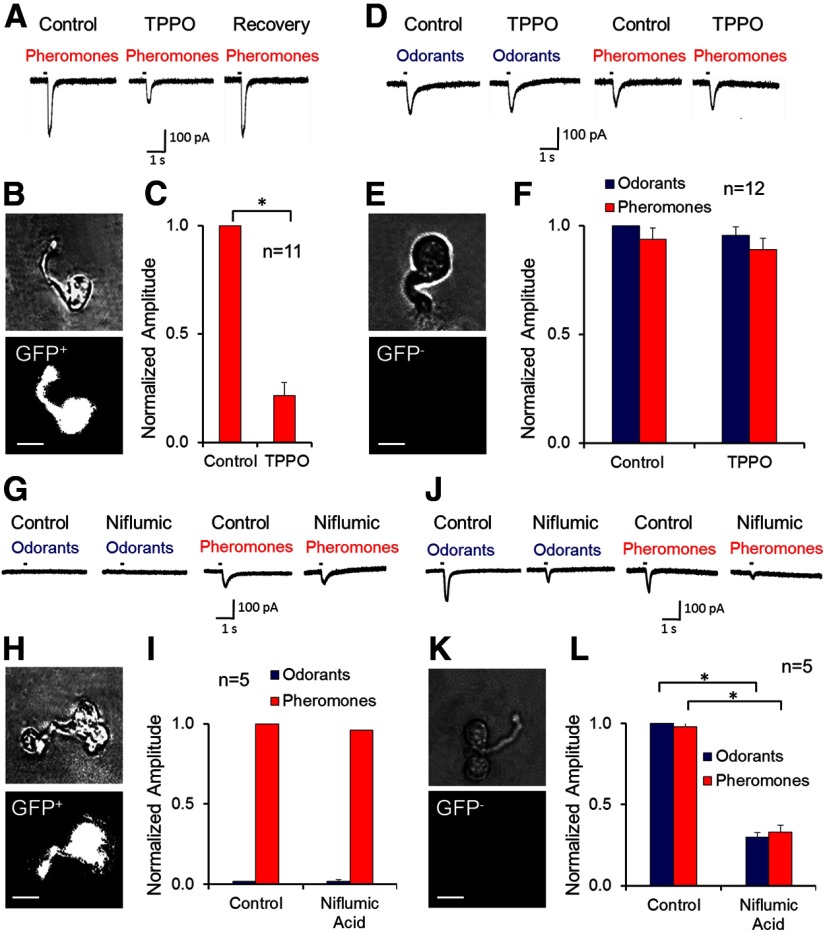Figure 4.
Blockage of TRPM5 with TPPO inhibits the pheromone responses in TRPM5-GFP+, but not in TRPM5-GFP− OSNs. A, Responses to pheromones by a TRPM5-GFP+ OSN in Ringer's solution, Ringer's solution with TPPO (150 μm), and after washout. B, Phase contrast (top) and fluorescence (GFP, bottom) view of the cell in A. C, Peaks of pheromone responses normalized to control (Wilcoxon rank sum test, p < 0.0001; n = 11). D, Responses to odorants and pheromones of a TRPM5-GFP− OSN in the absence/presence of TPPO. E, Phase contrast and fluorescence view of the cell in D. F, Peak of the responses to pheromones and odorants normalized to responses to pheromones in the absence of TPPO (Wilcoxon rank sum test, p > 0.05, pFDR = 0.025; n = 12). G–I, Lack of an effect of niflumic acid (300 μm), a blocker of Ca2+-activated Cl− channels, on loose-patch responses of TRPM5-GFP+ OSNs stimulated with odorants and pheromones; control, niflumic acid-free Ringer's solution. G, Example of the lack of an effect of niflumic acid on the pheromone response of a TRPM5-GFP+ OSN. H, Phase contrast and fluorescence view of the cell in G. I, Average currents recorded in TRPM5-GFP+ OSNs upon odorant and pheromone stimulation normalized to peaks of responses to pheromones for the experiments as in G (Wilcoxon rank sum test, p < 0.015, pFDR = 0.05; n = 5). J–L, Effect of niflumic acid (300 μm) on TRPM5-GFP− OSNs stimulated with odorants and pheromones. J, Example of a response of TRPM5-GFP− OSNs to odorants and pheromones in the absence/presence of niflumic acid. K, Phase contrast and fluorescence view of the cell in J. L, Peak of the responses of TRPM5-GFP− OSNs to pheromones and odorants normalized to responses to pheromones in the absence of niflumic acid (Wilcoxon rank sum test, *p < 0.0001; n = 5). Error bars indicate SEM.

